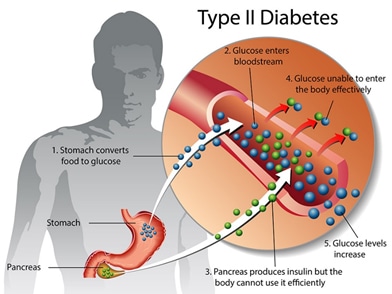Although exercise is beneficial for the management and prevention of T2DM, it is vital to ensure exercise is delivered correctly to avoid complications from T2DM. While exercising, the muscles require an increased amount of glucose as energy for the increased workload. This can lead to hypoglycaemia (low blood sugar levels) if not managed correctly. To avoid hyperglycaemic episodes while exercising, it is recommended that you have a good source of carbohydrates prior to exercising to avoid the drop in blood glucose levels. Depending on the duration and intensity of exercise, you may require some additional carbohydrate source during or after exercise as well. This is especially important for type 2 diabetics who are insulin dependent.
An increase in blood glucose levels during exercise is possible with high intensity exercise but is less common that hypoglycaemia. This can occur with high intensity bouts of exercise as the body responds with an exaggerated release if glucose to keep up with the demand, and this can continue to rise after the exercise is ceased due to poor insulin control.
Monitoring your blood glucose level before and after exercise will allow better management and less risk of these high or low glycaemic episodes from occurring.
At Inertia Health Group we run Group Diabetes exercise classes as well as individual exercise sessions to help you with the management of your diabetes care.

